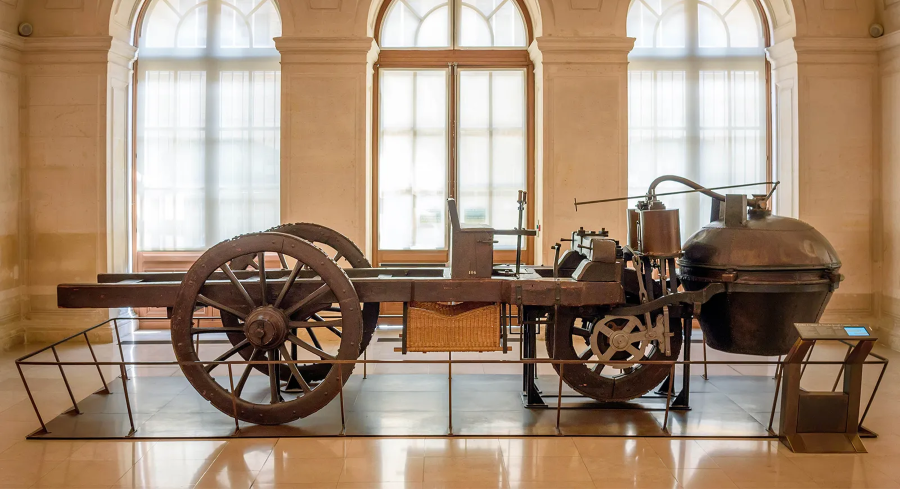Malay bardic tales are a type of folklore that creatively tells local wisdom, geopolitics, social structure, mystical elements, humor, traditions, and taboos in Malay Language. The oral, written, and symbolism of the narratives have been passed down through many generations among Southeast Asia’s indigenous populations (Nusantara). As most of the tales spans around the social, linguistic, and cultural dimensions, this article emphasises two important elements in the folklore that could be exploited for science education namely, science process skills and scientific content. Today, we will use the folk tale of Badang.

The narratives of Badang the plot takes place in Malaysia, Singapore, and Indonesia. As for the background of the story, Badang is a slave to the rich farmer, Orang Kaya Nira Sura. Because Badang is a small-statured and weak person, he only received a handful of rice each day. For slaves like Badang, he need to forage for food to feed his hunger. So, he set the fish trap (bubu) at the river stream every evening and gathered the trapped-fish the following morning. One day, his fish trap is empty and there is traces of fishbones and scales at the riverside.
Thinking that the phenomenon might be temporary, Badang set the fish-trap again, yet a similar incident has continuously happened for several days. So, Badang decided to catch the thief red-handed, and he hid himself in the nearby bush armed with a traditional weapon. To his surprise, the thief is a water spirit (Jembalang Air). The Jembalang’s eyes were red as fire, long matted hair and a long beard covering its chest or reaching its waist. Despite his small size, Badang seized the Jembalang and tied its hair to a rock.
The Jembalang begged for mercy and spared his life. In turn, Jembalang promised to grant Badang any wish. Badang wished for strength so that he would not tire working. The Jembalang granted his wish, but Badang needed to eat the Jembalang vomit. As per agreed, Badang ingests the Jembalang’s vomit and, as promised, Badang becomes immensely strong. The narratives continue by highlighting the instances of Badang showcase his strength through his dedicated work in slavery and helping his colleagues. He is then freed from slavery and appointed as Commander (Panglima).
The story of Badang is quite an interesting story to explore, especially with children. Storytelling always excites and motivates the children to engage in a lesson. Not just limited to literacy, folklore is also useful in understanding the social structure of certain communities in the past. In the case of Badang, the Badang’s desire to become strong justifies the importance of slaves in the social structure of Nusantara. The concept of slavery in Nusantara also different than the way slaves were treated by the colonialists could be learnt the social justice in Nusantara.
As for the science lesson, the creative exploration could be focused on the Jembalang Air’s vomit. Even though the story appears to be mystical and eerie, however, questioning certain elements in the narrative could open up for brainstorming to encourage the children to use evidence to make inferences, and relate it to the conclusion. This systematic exploration scaffold the scientific content through scientific thinking and science process skills. To put it into perspective, the evidences lies in the Jembalang‘s eating habit, in which it largely consumes protein. Let the children imagine the smell and texture the vomitus, in which are the combination of fish flesh with no bones and scales, mixed with gastro mucus. Therefore, the main component in the throw up could be the semi-digested protein.
At the same time, in the narratives, Badang was said to have a low carbohydrate intake due to the fact he could not work efficiently and received a handful of rice. Therefore, Badang has consumed high protein, low carbohydrate and followed with the intense physical activities that potentially build muscles. Despite being considered an imbalance diet, when all of the hypothetical evidence is considered, the vomitus works similarly to the protein shake. The liquid-formed and partially digested components in the vomit help make it much easier to increase Badang’s protein intake. In turn, Badang have more muscle buildup and has become stronger. If the children could grasp the conclusion by relating it to their real-life circumstances, such as protein shake which is a modern innovation, it would leave the children in awe to discover the scientific content in the folklore is pretty advanced.
As a science educator, the learning could happen at any instances. Badang tales could be a very good teaching and learning prompt or stimulant to encourage scientific thinking and science process skills. Beyond the excitement in the storytelling activities, drawing upon the hypothetical cause and effect relations through scientific content could also encourage the children to explore the elements in the narratives critically. Simultaneously, children will value their selfhood by exploring our own folklore and wisdom through the lens of science education.
This article is co-authored by Dr Zainun Mustafa and Dr Loh Su Ling. Both are the Specialist in Research and Training Division at the Southeast Asian Ministry of Education, Regional Centre of Education in Science and Mathematics (SEAMEO RECSAM), Pulau Pinang. Currently both are exploring creative pedagogy in science education and actively developing model lesson to facilitates in-service teacher training.




